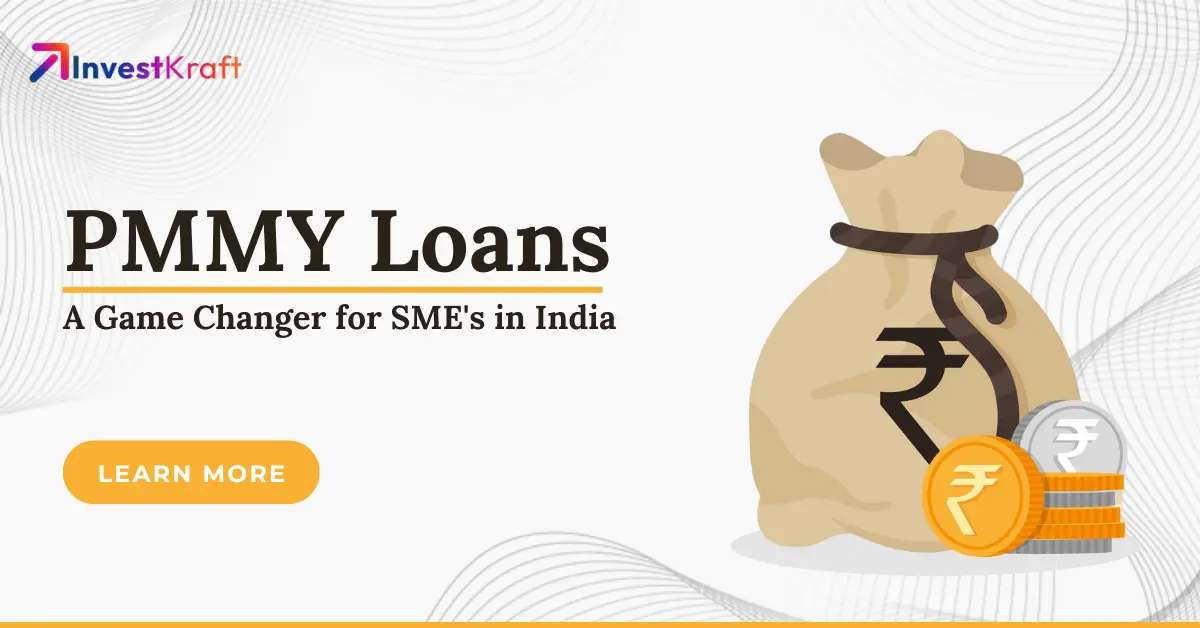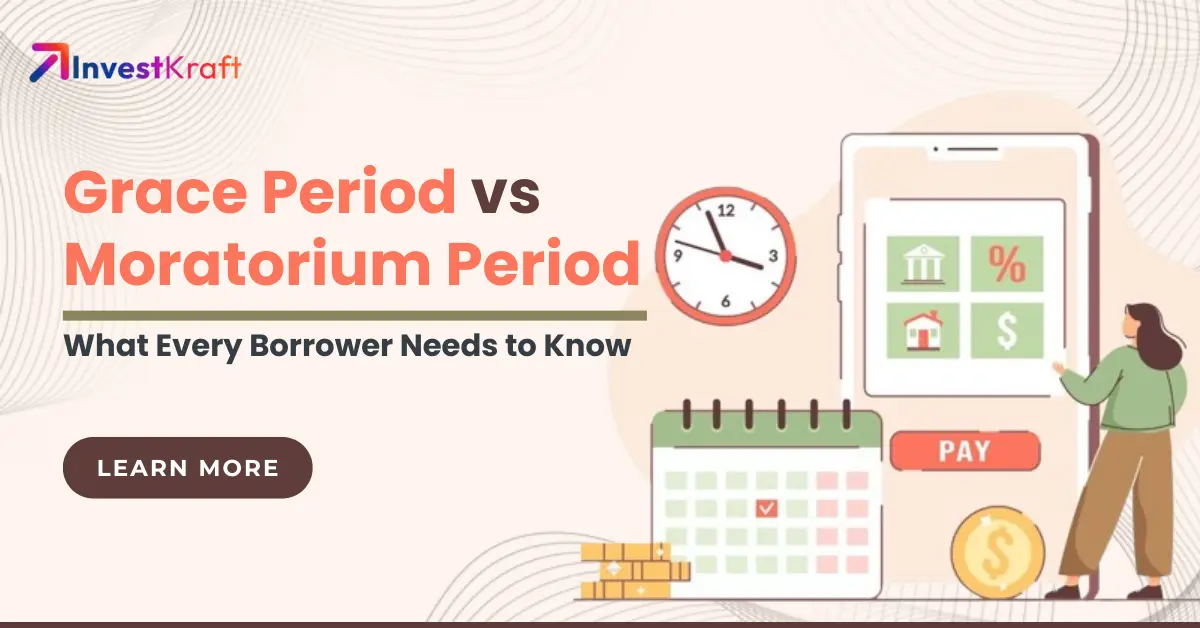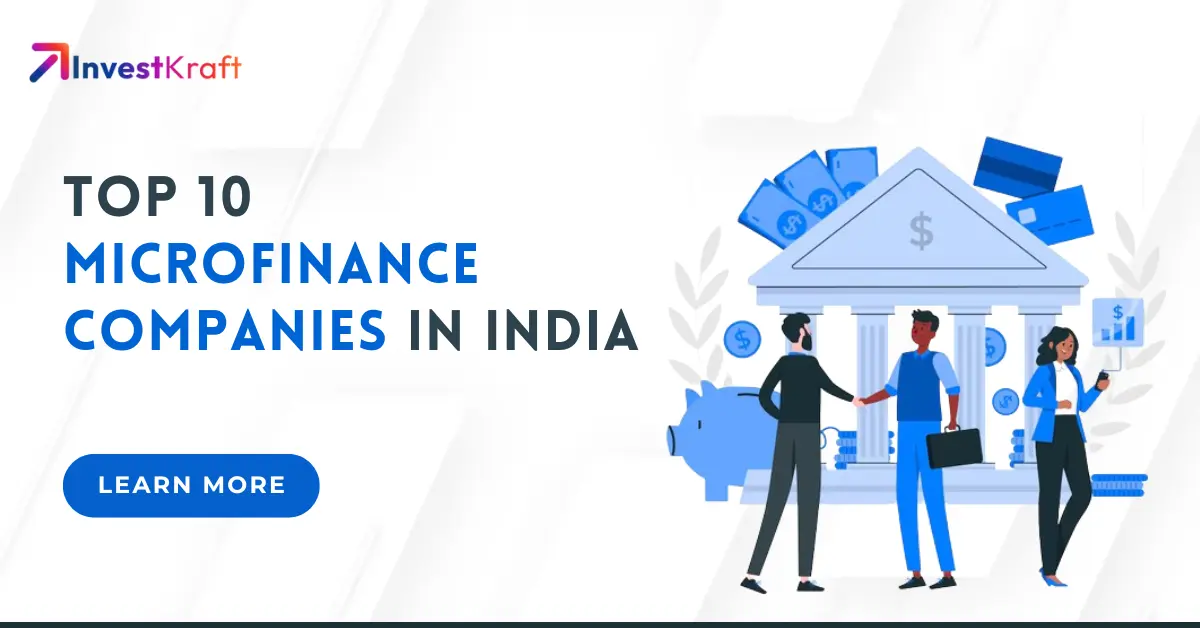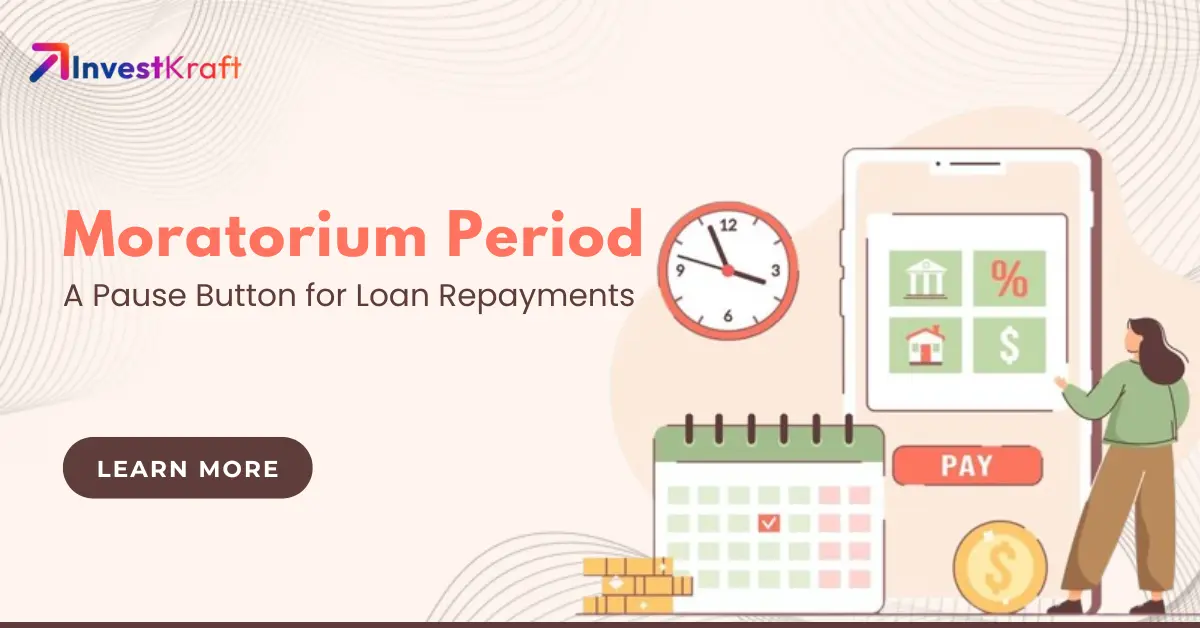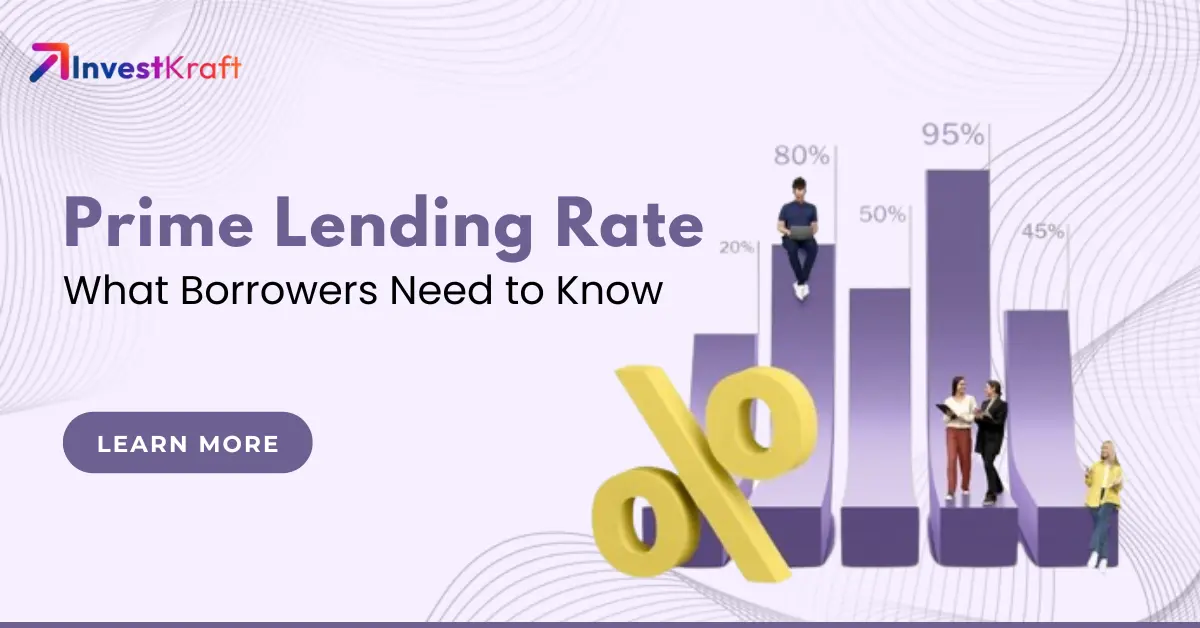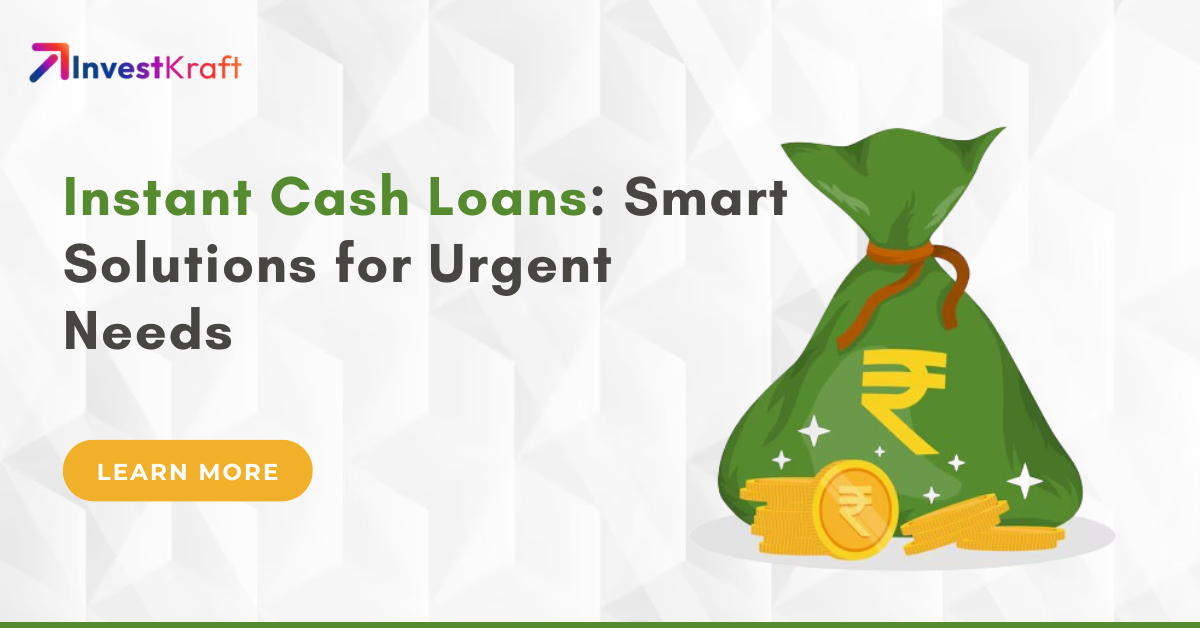Top Loan Schemes with Highest Subsidies in India 2024

Find the Indian loans with the highest subsidy easily with the help of Investkraft. This guide provides detailed information on the government-backed loan schemes in India, specifically focusing on those with the largest subsidy amounts. Learn about the eligibility requirements, how to apply for a subsidy loan and other important details to maximise your savings and financial advantages. Whether you are an aspiring entrepreneur, a first-time homebuyer or need financial support for education or agriculture, this article is your ultimate guide to securing the biggest loan subsidy in India.
What Do You Mean by Subsidy Loans in India?
Subsidy loans (or loan subsidies) provide crucial financial assistance by covering a portion of the loan interest or principal, effectively reducing the cost for the borrower. This especially benefits low-income individuals, farmers, small businesses and students, making loans more accessible and affordable. The subsidies not only alleviate the financial strain on borrowers but also contribute to wider policy goals, such as fostering education, agricultural progress and entrepreneurship.
In short, a subsidy loan is a form of financial aid provided by the government to support business growth in different sectors. These loans come with lower interest rates, with the government subsidizing a portion of the interest to make the overall cost more manageable for borrowers.
Why Is It Important to Choose the Right Loan with the Highest Subsidy?
Selecting the loan with the highest subsidy can have a substantial impact on your overall financial situation. It is crucial to carefully consider the available options and choose the one that best aligns with your long-term financial goals. Making the right decision in this regard can greatly contribute to your financial well-being and stability.
- Direct Impact on Repayment: Subsidies have a direct impact on loan repayment by decreasing the interest owed, resulting in lower monthly payments and a reduced overall repayment amount throughout the loan term.
- Long-Term Financial Benefits: The long-term financial benefits of having large loans, such as home mortgages or student loans, are significant because they allow for substantial savings for the loan term. With these types of loans, the potential for accumulating considerable savings is high.
- Higher Principal Allocation: By increasing the allocation towards the principal amount, a greater portion of the monthly payment will be used to decrease the loan amount. This will result in lower interest payments and accelerate the overall reduction of the loan principal.
- Faster Debt Clearance: Accelerated debt repayment can help you become debt-free faster, allowing you to allocate funds towards other financial objectives.
- Financial Flexibility: Substantial savings from subsidies can offer you the opportunity to make extra lump sum payments or overpay on your loan, giving you greater financial flexibility.
- Reduced Interest Burden: Paying off your loan early can lead to substantial savings in interest payments over the life of the loan. It is a smart financial move that can help you free up more money for other important expenses or investments. By reducing the interest burden, you can achieve financial freedom sooner and make the most of your money.
- Access to Benefits: Many governments provide various subsidies and incentives for specific loan types such as home loans and education loans. By meeting the eligibility criteria for these schemes, individuals can gain access to additional financial advantages.
- Leveraging Government Support: Government support in the form of subsidies can play a crucial role in enabling individuals to reach important financial milestones, such as purchasing a home or pursuing higher education. These subsidies provide financial assistance, making these goals more attainable for individuals who might otherwise struggle to afford them.
What are the Different Types of Loan Subsidies Available in India?
In India, various loan subsidies are available to promote entrepreneurship, support SMEs and provide financial assistance to specific groups like women and the economically weaker sections of society. These subsidies are tailored to different sectors and categories of borrowers, aiming to foster economic growth and bridge financial gaps.
1. Credit-Linked Subsidy Schemes (CLCSS)
The CLCSS schemes offer a substantial subsidy on the interest rates for loans taken by small and medium enterprises (SMEs) for targeted purposes and this subsidy is directly tied to the credit facilities provided by banks and financial institutions.
This scheme aims to support small and medium-sized enterprises by offering financial assistance in the form of subsidized interest rates on loans. This initiative is designed to encourage SMEs to invest in technology upgrades and modernization, thereby enhancing their productivity and competitiveness.
2. Capital Subsidy Schemes
Government schemes offering one-time capital subsidies can be a significant source of support for entrepreneurs embarking on new business ventures or seeking to expand their existing operations. For instance, the subsidies might help cover initial setup costs or enable the purchase of essential equipment and technology. Such assistance can play a crucial role in enhancing the viability and growth prospects of businesses across various sectors.
- Stand-up India: This scheme supports women entrepreneurs and those from SC/ST communities by offering loans ranging from 10 lakh rupees to 1 crore rupees. The initiative aims to provide financial assistance to new businesses and start-ups led by these specific groups.
- Coir Udyami Yojana: This scheme offers a credit-linked subsidy to support the establishment of coir units, with a maximum allowable cost of 10 lakh rupees alongside the provision of working capital, not exceeding 25% of the project cost.
3. Interest Subsidy Schemes
SMEs can benefit from these schemes that offer subsidies on loan interest rates. These initiatives aim to support small and medium-sized enterprises in accessing affordable financing. One example of such a scheme is -
- Assistance of Capital and Interest Subsidy for MSMEs: This scheme supports MSMEs in the manufacturing and service sectors by offering a subsidy on the interest rate of their loans.
4. Rent Subsidy Schemes
Various schemes offer financial support for small and medium-sized entrepreneurs (SMEs) to cover their rental or leasing expenses for business premises. Some examples of such schemes include government grants, low-interest loans and subsidies specifically designed to help SMEs afford their office, retail or manufacturing spaces. These programmes aim to alleviate the financial burden on SMEs and encourage their growth and sustainability by assisting with one of their major operating costs.
5. Margin Money Schemes
These schemes offer financial assistance to cover the initial investment needed for starting a new venture. They are designed to provide subsidies specifically for the margin money needed to establish a business. One common example of such schemes includes -
- Margin Money / Subsidy Scheme - Seed Money Scheme: This scheme aims to offer financial support to help unemployed individuals start new businesses by providing a subsidy to cover a portion of the initial capital required. This initiative is designed to encourage entrepreneurship and provide a tangible solution for individuals facing unemployment.
6. Credit Guarantee Schemes
Government-backed loan guarantee schemes provide lenders with a guarantee on loans taken by small and medium-sized enterprises (SMEs), minimizing the risk involved. This encourages lenders to provide financial assistance to SMEs who may not have sufficient collateral or credit history. By reducing the risk, these schemes aim to promote access to financing for SMEs and support their growth and development.
- Credit Guarantee Fund Trust for Micro and Small Enterprises (CGTMSE): The scheme offers a significant benefit by providing a guarantee of up to 75% of the loan amount for both new and existing MSMEs, with loans capped at 2 crore rupees. This can serve as a valuable support system for small and medium enterprises looking to secure financing for business growth and development.
7. Marketing Assistance Schemes
These schemes aim to support small and medium-sized enterprises by providing them with financial assistance for marketing and promotional activities like -
- National Small Industries Corporation (NSIC) Subsidy Schemes: This scheme provides credit-related subsidies for MSMEs, including financial aid for marketing, technology upgrades, purchasing raw materials and settling outstanding dues.
8. Employment Subsidies
These schemes provide entrepreneurs with financial assistance to create employment opportunities like -
- ATUFS Scheme: This scheme stands for the Amended Technology Upgradation Fund Scheme and plays a critical role in providing a one-time capital subsidy for investments in high-employment and technology-intensive sectors within the textile value chain. This initiative aims to modernize and upgrade the textile industry by incentivizing investments in advanced machinery and technology, ultimately fostering growth and competitiveness in this sector.
9. Education Subsidies
Various schemes exist that offer financial aid to students who are pursuing higher education. These schemes aim to support students in their educational journey by providing the necessary funds. Some examples of these schemes include scholarships, grants and loans that cater to different needs and circumstances. The purpose of these schemes is to ensure that students have the financial resources they need to pursue their academic goals.
10. Export Subsidies
Export schemes are available to offer financial support to exporters. Various examples of such schemes exist, serving the purpose of helping exporters with their finances.
11. Consumption Subsidies
Government subsidies aim to provide financial support to consumers for essential goods and services, promoting accessibility at subsidized rates. Additionally, loan subsidies are tailored to bolster entrepreneurship, small and medium enterprises and offer aid to specific groups and sectors. In turn, these measures are geared towards advancing economic growth and development in India.
Top 20 Loans with the Highest Subsidies in India 2024
Presented below is the list of top loans with the highest subsidies in India (as per our expert’s google search) -
| Scheme Name |
Loan Amount |
Subsidy |
Eligibility |
Key Features |
| Pradhan Mantri Mudra Yojana (PMMY) |
Up to ₹10 Lakh |
No collateral required |
Micro and small businesses, startups, and self-employed individuals |
• Collateral-free loans |
| • Loans classified into Shishu (up to ₹50,000), Kishore (₹50,001 to ₹5 Lakh), and Tarun (₹5 Lakh to ₹10 Lakh) categories |
| • 3% interest rate discount for women borrowers |
| Credit Linked Capital Subsidy Scheme (CLCSS) |
Up to 15% of capital investment, max ₹15 Lakh |
15% upfront capital subsidy |
MSMEs looking to upgrade technology |
• Encourages technology upgradation in MSMEs |
| • Reduces capital investment costs |
| • Improves product quality and productivity |
| Coir Udyami Yojana (CUY) |
Up to ₹10 Lakh + working capital (max 25% of project cost) |
40% subsidy, 55% loan, 5% beneficiary contribution |
Individuals, NGOs, SHGs, registered societies, trusts, and JLGs in the coir industry |
• Promotes sustainable development of the coir industry |
| • Covers project cost for setting up coir manufacturing units |
| • Collateral-free loans available |
| Stand Up India Scheme |
₹10 Lakh to ₹1 Crore |
No explicit subsidy, but the loan is collateral-free |
SC/ST and/or women entrepreneurs setting up greenfield enterprises |
• Facilitates bank loans for setting up greenfield enterprises |
| • Promotes entrepreneurship among underrepresented sections |
| • Covers manufacturing, services, or the trading sector |
| Sustainable Finance Scheme by SIDBI |
₹10 Lakh to ₹25 Crore |
No explicit subsidy, but concessional interest rates |
MSMEs focusing on energy efficiency and cleaner production |
• Provides financing for projects related to energy efficiency and cleaner production |
| • Helps MSMEs adopt sustainable practices |
| • Offers long-term financing up to 10 years |
| Pradhan Mantri Gramin Bhandaran Yojana (PMGBY) |
Up to ₹2 Lakh |
50% subsidy |
Farmers, SHGs, and cooperatives |
• Promotes farm-level storage facilities |
| • Helps in reducing post-harvest losses |
| • Provides interest-free loans for setting up storage facilities |
| Pradhan Mantri Kisan Sampada Yojana (PMKSY) |
Up to ₹10 Lakh |
50% subsidy |
Farmers, SHGs, and cooperatives |
• Focuses on post-harvest management and value addition |
| • Supports infrastructure development for food processing |
| • Enhances farmers' income through better value chains |
| Pradhan Mantri Fasal Bima Yojana (PMFBY) |
Up to ₹4 Lakh |
50% subsidy |
Farmers |
• Provides insurance coverage for crops against natural calamities |
| • Reduces financial risks for farmers |
| • Covers crops like paddy, wheat, sugarcane, cotton, and others |
| Pradhan Mantri Krishi Sinchayee Yojana (PMKSY) |
Up to ₹10 Lakh |
50% subsidy |
Farmers, SHGs, and cooperatives |
• Focuses on irrigation and water conservation |
| • Supports infrastructure development for water management |
| • Enhances agricultural productivity and sustainability |
| Pradhan Mantri Matsya Sampada Yojana (PMMSY) |
Up to ₹10 Lakh |
50% subsidy |
Fishermen, SHGs, and cooperatives |
• Promotes sustainable fishing practices |
| • Supports infrastructure development for the fishery sector |
| • Enhances fish production and income for fishermen |
| Pradhan Mantri Awas Yojana (PMAY) |
Up to ₹6 Lakh |
Interest subsidy of up to 6.5% |
Economically weaker sections and low-income groups |
• Provides affordable housing for the urban poor |
| • Reduces financial burden through interest subsidy |
| • Promotes housing for all by 2022 |
| Deen Dayal Upadhyaya Grameen Kaushalya Yojana (DDU-GKY) |
Up to ₹1.5 Lakh |
100% placement-linked skilling program |
Rural youth from poor families |
• Focuses on skill development and job placement |
| • Provides free skill training and post-placement support |
| • Empowers rural youth to secure sustainable livelihoods |
| Pradhan Mantri Rojgar Protsahan Yojana (PMRPY) |
Not applicable |
Employer's contribution to EPF (12% of wages) |
Employers in the MSME sector |
• Encourages job creation in the MSME sector |
| • Reduces the financial burden on employers |
| • Promotes formalization of the workforce |
| Pradhan Mantri Vaya Vandana Yojana (PMVVY) |
Up to ₹15 Lakh |
8% guaranteed return |
Senior citizens aged 60 years and above |
• Provides a guaranteed return on investment |
| • Ensures regular income for senior citizens |
| • Offers tax benefits on the investment |
| Pradhan Mantri Jeevan Jyoti Bima Yojana (PMJJBY) |
Up to ₹2 Lakh |
₹330 annual premium subsidized by the government |
Individuals aged 18-50 years |
• Provides life insurance coverage at a nominal premium |
| • Ensures financial security for the family in case of death |
| • Promotes financial inclusion and risk mitigation |
| Pradhan Mantri Suraksha Bima Yojana (PMSBY) |
Up to ₹2 Lakh |
₹12 annual premium subsidized by the government |
Individuals aged 18-70 years |
• Provides accidental death and disability coverage |
| • Ensures financial security in case of unforeseen accidents |
| • Promotes financial inclusion and risk mitigation |
| Pradhan Mantri Jan Dhan Yojana (PMJDY) |
Not applicable |
No explicit subsidy, but provides access to banking services |
Individuals without a bank account |
• Ensures access to basic banking services |
| • Promotes financial inclusion and access to credit |
| • Provides overdraft facility, accident insurance, and more |
| Pradhan Mantri Kisan Maan-Dhan Yojana (PM-KMY) |
Not applicable |
₹2,000 per year pension contribution subsidized by the government |
Small and marginal farmers aged 18-40 years |
• Provides a minimum assured pension of ₹3,000 per month |
| • Ensures financial security for small and marginal farmers |
| • Encourages enrolment and participation in the scheme |
| Pradhan Mantri Shram Yogi Maan-dhan (PM-SYM) |
Not applicable |
₹1,000 per year pension contribution subsidized by the government |
Unorganized sector workers aged 18-40 years |
• Provides a minimum assured pension of ₹3,000 per month |
| • Ensures financial security for unorganized sector workers |
| • Promotes social security and welfare of the workforce |
| Pradhan Mantri Kisan Samman Nidhi (PM-KISAN) |
Not applicable |
₹6,000 per year direct cash transfer |
Small and marginal farmers |
• Provides income support to farmers |
| • Helps in addressing agricultural distress |
| • Enhances the purchasing power of farmers |
How to Increase Subsidized Loan Benefits in India?
Listed below are the steps through which subsidized loan benefits can be increased in India -
| Particular |
To Do |
| Enhance Targeting and Eligibility |
Regularly update income slabs to match inflation and economic growth. |
| Include rural women, people with disabilities and tribal communities in the coverage. |
| Prioritize regions with high poverty rates and limited credit access. |
| Simplify Application Process |
Implement online processes to reduce paperwork and delays in applications and approvals. |
| Create one form for multiple schemes to simplify the process. |
| Promote awareness to inform people about eligibility and procedures. |
| Increase Subsidy Amounts |
Subsidies should be adjusted for inflation to maintain their real value. |
| Increase subsidies for women entrepreneurs and startups. |
| Offer incentives such as interest rate waivers or loan assistance. |
| Strengthen Monitoring and Evaluation |
Use technology to monitor disbursement, use and impact. |
| Perform audits to find errors and leaks. |
| Reward effective implementation and penalize poor performance. |
| Promote Financial Literacy |
Promote financial literacy for products, rates and repayment awareness. |
| Provide free credit counselling services to help borrowers make informed decisions. |
| Help borrowers manage loan payments and avoid default. |
| Collaborate with Financial Institutions |
Utilize private banks and NBFCs to enhance reach and expertise. |
| Introduce risk-sharing funds to encourage lending to underserved segments. |
| Train financial institutions on loan processing and disbursement. |
| Address Infrastructure Gaps |
Improve digital infrastructure for online transactions and information access in rural areas. |
| Promote financial literacy and banking services in rural areas. |
| Simplify regulations for MSMEs to access credit. |
Conclusion
Investkraft acts as a convenient solution for those seeking information regarding the highest subsidy loans in India. It offers detailed information on various government-backed loan schemes, allowing individuals and businesses to make well-informed choices and capitalize on financial advantages. Whether it is understanding eligibility requirements or manoeuvring through the application process, Investkraft provides crucial guidance for accessing significant loan subsidies.
Utilizing the resource to gain valuable insights and assistance in achieving substantial cost savings, regardless of whether you are an aspiring entrepreneur, a prospective homeowner or someone in need of financial aid for education or agricultural purposes. By harnessing subsidies, you can open doors to new prospects, alleviate financial pressures and play a part in driving forward India’s economic advancement.
Frequently Asked Questions (FAQs)
Q1: Which loan scheme offers the highest headline subsidy rate?
A: There is not a single scheme with the absolute highest subsidy rate, as it depends on the loan category and specific scheme. However, some schemes, such as the Pradhan Mantri Awas Yojana (PMAY), are known for offering significant subsidies, with eligible borrowers receiving up to 6.5% subsidy.
Q2: How long does it typically take to get approval for a loan with a government subsidy?
A: Loan processing times can range from a few weeks to a couple of months, depending on the lender, the complexity of the scheme and how complete your application is. However, certain schemes may take even longer.
Q3: Can I avail a loan with a subsidy if I already have an existing loan?
A: It varies based on the scheme and lender. Certain schemes may have limitations on accessing subsidized loans if you already have debt. To avoid any confusion, it is recommended to consult the lender or refer to the guidelines provided by the scheme.
Q4: Are there any penalties for prepaying a loan with a government subsidy?
A: Make sure to thoroughly read the loan agreement to check for any prepayment penalties on government-subsidized loan schemes. It is important to understand all the terms and conditions before committing to the loan to avoid any unexpected charges later on.
Q5: What are the interest rate benefits of a government-subsidized loan?
A: Government subsidies can greatly reduce the interest rate on loans, resulting in lower monthly payments and substantial savings throughout the loan term. For example, a borrower receiving a PMAY subsidy for a home loan could save thousands of rupees in interest payments throughout the loan.
Q6: Are there any fees associated with availing a government-subsidized loan?
A: Yes, there might be a processing fee when applying for a government scheme loan. These fees depend on the lender and loan amount and some lenders may also charge legal or documentation fees. It is important to ask about all fees in advance to avoid surprises.
Q7: Is there a maximum loan amount I can borrow under a government scheme?
A: Yes, government loan schemes have maximum limits to ensure they reach their target beneficiaries and encourage responsible borrowing. For example, the PMAY scheme offers varying maximum loan amounts for EWS, LIG and MIG categories.
Q8: Can a self-employed individual apply for a loan under a government scheme?
A: Many government loan schemes cater to self-employed individuals, but eligibility criteria such as income proof and business nature are often required. Certain schemes, like MUDRA loans, specifically target self-employed individuals and small businesses.

Author: Abhik Das
Abhik Das is a versatile content writer with over 5 years of experience crafting engaging and informative content across diverse industries. His expertise spans the fields of ed-tech, pharmaceuticals, organic food, travel, sports, and finance.
Here's what sets Abhik apart:
Content Versatility: Able to adapt writing style and tone to suit various audiences and content needs.
SEO Proficiency: Creates content optimized for search engines, ensuring discoverability and organic traffic.
Deep Research: Conducts thorough research to ensure content accuracy and credibility across complex topics.
Engaging Storytelling: Captures reader interest with clear, concise, and compelling writing.
Abhik's diverse background empowers him to deliver insightful content across a wide range of subjects. Whether you're seeking engaging explainer pieces on the latest financial trends, informative guides to organic food choices, or captivating travelogues, Abhik has the expertise to craft content that resonates with your audience.







